Knowing what foods can be safely canned & which foods shouldn’t be canned is essential to following safe canning practices.
This post may contain affiliate links at no additional cost to you. By making your purchases through the links on this website, IMSL may make a small percentage at no direct cost to you. IMSL only promotes products we use & truly believe in. Please refer to my Privacy & Disclosures for further information. IMSL thanks you for your support!
Welcome to the 3rd installment in IMSL’s canning safety series! Knowing which foods are safe to can, but especially those foods that are not safe to can, is definitely essential to any canning safety practice. Whether you are just beginning to learn to can or are a seasoned canner, we can all use a reminder at times to stay safe in our food preservation efforts!
If you haven’t already taken a look at the first two articles in the canning safety series, they cover familiarizing yourself with headspace for canning and an in-depth look at the different canning methods to use when preserving.
As certain foods require different canning methods in order to maintain safety, it’s important to know their differences, and worth a mention here.
SAFE CANNING METHODS & THEIR DIFFERENCES
There are several ways in which to preserve certain foods by canning. Three in fact.
Water bath canning is typically used for foods that are high in acid such as tomato products, salsa, and fruits. When utilizing this method for preserving your foods, they are processed at lower temperatures than that of pressure canning. With the addition of some form of acid combined with the processing time & temperatures, boiling temperature of 212°F, you can be sure the food will be void of any yeasts, harmful molds, enzymes, & some bacteria which can cause spoilage.
Pressure Canning is normally used when preserving foods that are low in acid such as meats, vegetables, and seafood. With little acid being available to help prevent spoilage, pressure canning processing temperature of 240° and appropriate processing times will destroy unwanted bacteria.
Atmospheric steam canning, aka steam canner & not to be confused with a pressure canner as it’s sometimes referred to as a stem-pressure canner 🤔, is typically used the same as water bath canning method for foods that are high in acid including jams, jellies, and pickles.
Working similarly to a water bath canner, the biggest difference in using a steam canner is water consumption. Being all about sustainability here on the hill, this is a major reason as to why I now utilize a steam canner when possible. Steam canning uses a mere quart and a half and up to 3 quarts of water in comparison to a water bath canner which uses up to 4 gallons of water for processing. Steam canning also saves on my propane usage as the time is markedly faster for heating up the water to appropriate temperatures.
The amount of water used when steam canning also works against some recipes that may require extensive processing times. Steam canning is suitable for any recipe with processing times, including any altitude adjustments, which are under 45 minutes. This is due to the fact that the steam canner should never be opened during processing, and will not have enough water to support any processing times over the 45 minute mark.
Following safe canning practices are essential for well, keeping you & your family safe. Safe from poisoning in fact. Botulism is real people. It’s invisible, and it can kill. Creating good canning habits right from the start is essential to avoiding disaster.
Be sure to check out all my tried and true recipes for canning, canning safety, tutorials and more HERE.
All safe, tested canning recipes are typically tested for altitudes of 0-1000 feet. Should you reside or be processing at an altitude of over 1000 feet, adjustments need to be made for certain foods and processing times. Higher altitudes, the recipe will need to be adjusted accordingly.
Don’t know your altitude? You can check yours HERE. For those with elevations higher than 1000 feet, adjust according to below.
- Up to 1000 ft – follow the recipe guidelines
- 1000 ft to 3000 ft – increase the processing time by 5 minutes
- 3001 ft to 6000 ft – increase the processing time by 10 minutes
- 6001 ft to 8000 ft – increase the processing time by 15 minutes
- 8001 ft to 10,000 ft – increase the processing time by 20 minutes
WHY IT’S IMPORTANT TO KNOW WHICH FOODS CAN BE CANNED & WHICH FOODS CANNOT BE CANNED
There are foods which are just not appropriate to can. There are several reasons as to the why’s.
One reason is due to the fact the the food itself does not have the ability to destroy harmful microorganisms during the canning process.
It can also stem from the fact the foods structure interfere’s with proper heat transference throughout the product allowing unwanted bacteria to remain.
And finally, it may be that the food itself is just too delicate. It doesn’t hold up to the heat of processing and often results in well, a mushy, unpalatable mess.
Although there are many canning recipes floating around cyber space right now, and those passed down from Grandma are included in this, stick to tried & true recipes only. Those that have been tested and shown to be safe in this century 😂 by reputable sources.
I offer a few of these recipes here on site and can be found in my canning category. Other reputable sources can be found…
- USDA’s Complete Guide To Home Canning
- National Center For Home Food Preservation
- Local Extension Offices
FOODS THAT ARE SAFE TO CAN
When it comes to preserving your foods safely when canning, scientia potentia est, or knowledge is power.
Knowing which foods are safe to can AND those foods that should never be canned brings with it that powerful control over the foods you are preserving.
Taking it a step further, knowing which foods to can used using which preserving method will have you confidently preserving the harvest for your family in no time flat.
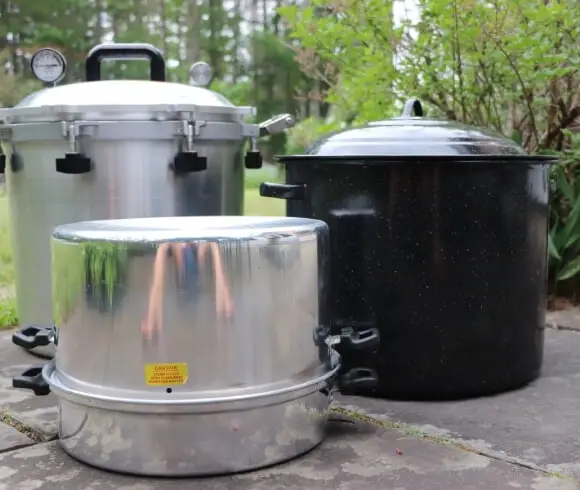
FOODS THAT ARE SAFE TO CAN USING A WATER BATH CANNER
There is a wide wide world of foods which can be preserved using the water bath canning method. And the good news? It’s easy to learn, cost effective to purchase the equipment, and is safe to use when canning the following foods.
Again, foods that are considered acidic are safe to can using a water bath canner. These foods include:
- TOMATOES – Tomato products including tomato sauce (without meat), tomato juice, & more can be safely canned as this fruit is acidic and often utilize additional acid to many recipes
- SALSA – Salsa’s are safe to can using the water bath method when a safe, tested recipe is used. My amazing salsa recipe is one that is requested by everyone I know. Stick to the recipe, however.
- FRUIT – Jams, jellies, preserves, conserves, marmalades, and most fruit can be preserved using a water bath canner.
- PICKLES – Foods, including many vegetables, that are pickled are safe due to the addition of vinegar, typically with at least a 5% acidity, sometimes labeled 50% grain
- RELISH – This condiment is safe due to the above reasons for pickles. The added vinegar creates the proper acidic environment
- PIE FILLINGS, CHUTNEYS & FRUIT SAUCES – Foods such as applesauce, apple butter, and all kinds of fruit fillings etc are typically high in acid & will require the addition of citric acid or lemon juice to increase the levels even further
- FERMENTED FOODS – Fermented foods such as kimchi, sauerkraut, and fermented pickled foods may be canned using tested recipes only. Optionally, your recipes may be sent in for safety testing if you like.
FOODS THAT ARE SAFE TO PROCESS USING PRESSURE CANNER
So what about non-acidic or low in acid foods that you may be interested in preserving using the pressure canning method? After all, we may not all have large freezer space available!
Utilizing only those recipes that have been developed and tested as safe cannot be stressed enough. Pressure canning is the only method to use for the following foods considered low acid (pH of more than 4.6).
Sharing Is Caring
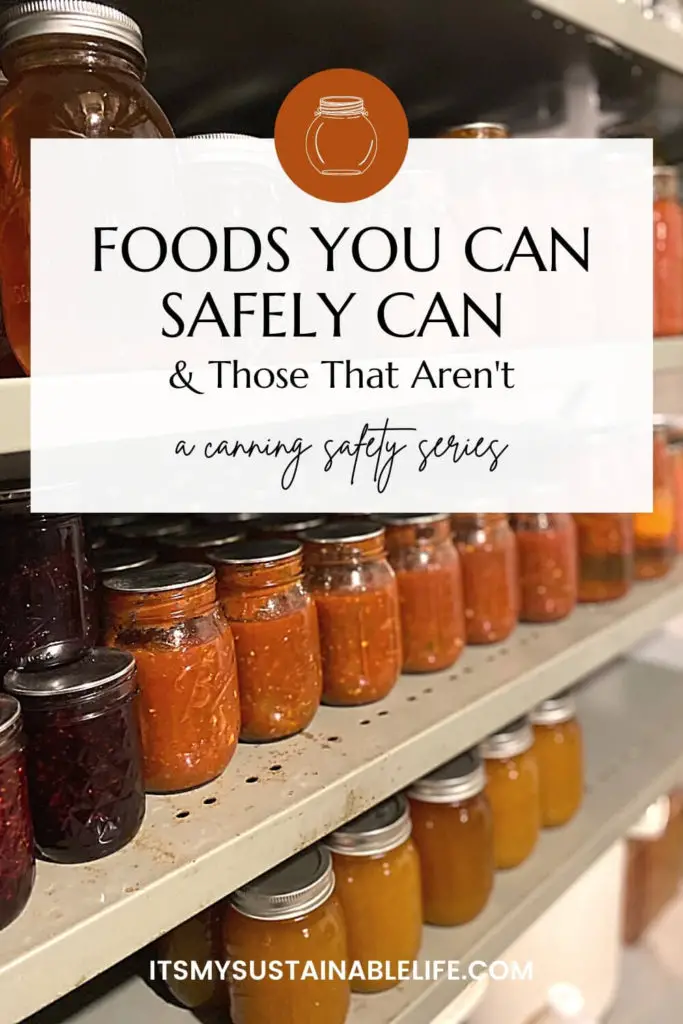
VEGETABLES THAT CAN BE PROCESSED WITH PRESSURE CANNER
A bit more of an extensive list, vegetables deserved their own highlight. Most vegetables should be canned with the pressure canning method and no, the list does not include tomatoes as they are technically a fruit 😊. Included are a few of the favorites and a few I’ve yet to try:
- Asparagus – Spears or pieces
- Beans & Peas – Shelled or dried
- Baked Beans
- Green Beans – Aka, string beans
- Carrots – Sliced or diced
- Mixed Veggies
- Corn – Creamed or whole kernel
- Peppers
- Potatoes
- Sweet – Pieced or whole
- White – Cubed or whole
- Spinach & Other Greens
- Squash – Winter squash, pumpkin both cubed
OTHER FOODS THAT NEED TO BE PRESSURED CANNED
Great care should be taken when canning the following items.
- MEATS
- POULTRY
- SEAFOOD
- STOCK – Meat stocks should be pressured canned and care taken to skim & strain as much fat as possible off prior to processing
According to the National Center For Home Food Preservation when it comes to canning meats, the cuts & preparation matter.
We cannot support the canning of cured, brined or corned meats with the procedures for fresh meats.
NCHFP
At the above link there are all the recommendations for preserving meats, poultry, and seafood you will need.
Again, don’t be a canning rebel and take any chances. Follow the recipes to a T and dot the I’s when it comes to preparation & processing.
FOODS SAFE TO PROCESS USING A STEAM CANNER
When it comes to the foods that are safe for steam canning, think water bath canning. Pretty much the same list goes.
Foods that are high acid (pH of 4.6 or less), are naturally acidic or have been properly acidified with tested recipes, can be processed using the atmospheric steam canning method.
- FRUITS
- PRESERVES
- PICKLED FOODS
- PICKLED VEGETABLES
FOODS THAT SHOULD NEVER BE CANNED
Knowing what foods NOT to can, ever, ever, ever, may be just as important as knowing which you can can. Sounds like a homestead dance 😂. The following foods should be avoided in the canning kitchen at all costs. It’s just not worth the risk.
TENDER VEGETABLES
It’s not that you should never can them. It’s more the fact of “why would you?” The high temperatures used to process these vegetables render them to, well, mush, & cause discoloration. Not so appetizing to say the least.
When looking to preserve these, think freezing, pickling or fermenting instead.
- BROCCOLI
- BRUSSEL SPROUTS
- CABBAGE
- CAULIFLOWER
- OLIVES
- ARTICHOKES
- EGGPLANT
- SUMMER SQUASH
- LETTUCE
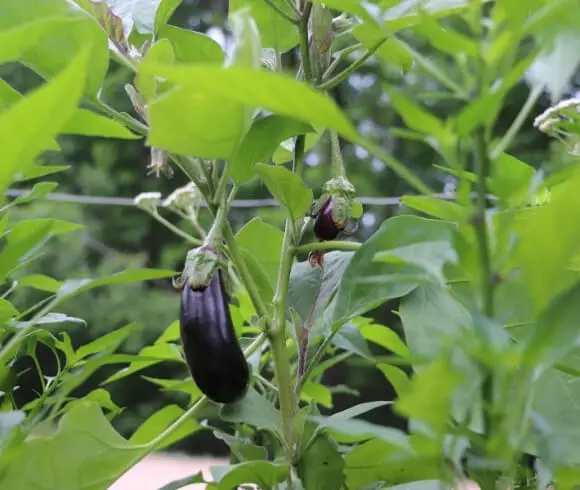
FATS & OILS
Foods that are high in fats & oils are basically a petri dish for Clostridium botulinum to grow and develop. That would be botulism my friend.
Why? Fats & oils tend to be dense and thus interfere with proper heat distributions while processing. They can also interfere with proper sealing of the jars
So avoid the following foods & recipes that contain excess fats and oils:
- PESTO – High in oils, pesto is not a good candidate for canning. Plan on freezing instead
- OILS – Avoid the temptation to add oil to recipes such as your favorite tomato sauce. Stick to tested and safe recipes only, and plan on adding extra oils prior to serving. I did come across one exception to this rule. This recipe for herbal oil acidifies the herb before its stored in oil, as with any safe recipe for canning, stick to the recipe by the letter. Personally, I’m not going to risk it
DAIRY PRODUCTS
Dairy products are low in acid & not suitable for canning. Refrain from adding dairy to soups, gravies, custards etc. Instead, prepare either fresh or plan on freezing. Dairy products include the following:
- BUTTER
- CHEESE
- MILK – Milk of all kinds (goat, sheep, cow) are not safe to can
- SOUR CREAM
- YOGURT
- BUTTERMILK
- CREAM
- MAYONNAISE
- TOFU & SOY PRODUCTS
EGGS
Unfortunately there are no tested, safe recipes to date that allow for eggs either pickled or plain, to be preserved by canning. Stick to pickling and refrigerating.
LARD
Density is an issue with this product. Lard freezes well, lasts in the refrigerator for almost ever, and even stores at room temperature when created correctly.
PASTA & RICE
Both of these foods contain starch. See below for the issues with starch. Refrain from adding to sauces, soups, etc. and instead add to your final meal when you are ready to serve
STARCH & THICKENERS
Avoid as an added ingredient as they interfere with heat transference throughout the product during processing. Unless you are following a safe, tested recipe, of which there are only a very few, avoid the following and instead add to your finished product prior to serving:
- CORNSTARCH
- CLEAR JEL ®
- TAPIOCA
- STARCH
- ARROWROOT
- CORNMEAL
- FLOUR
DENSE PUREES
The problem here once again is the density of the product which prevents heat from evenly distributing throughout during processing. Instead think of canning in an alternative form, such as whole, and mash or puree it when ready to use, or freeze instead.
A few puree’s & mash’s are listed below:
- PUMPKIN & SQUASH – As an alternative, cube instead
- BEANS PUREED – Think refried beans here. Beans can be processed using the pressure canning method when they are dry, or pre-cooking your beans and freeze
- MASHED POTATO – Instead cube or can small potatoes whole
GRAINS
When it comes to grains, they may not be as hardy and shelf stable as you may think. Excessive heat exposure, such as that of processing, can drastically shorten grains life expectancy (they will turn rancid quickly) as well as harm the grains nutrient content.
In addition, once again, grains do not allow proper heat transference when processing. Therefore, those that are located in the center portion of the jar will not get hot enough to be considered safe.
The following grains should never be canned or processed:
- BREAD
- PASTA
- OATS
- WHEAT
- BARLEY
- RICE
- CRACKERS
- BISCUITS
- PIE DOUGH
- FLOURS
BREAD & CAKES
Canning breads & cakes which have been baked in jars and then sealed upon taking out of the oven is a no no. Not good. Not only are they low in acid and a healthy dose of botulism waiting to happen, they are not considered safe as they are not really a “canned” item. Not to mention canning jars are not made to be baked in and can shatter in oven temperatures.
FREE CANNING CHECKLIST CHEATSHEET
To help you along with your processing efforts, I’ve created a unique FREE Canning Checklist cheatsheet listing all three methods of processing; pressure canning (article coming soon as well!), steam canning (instructional tutorial coming soon!), and water bath canning.
Print and laminate your copy of the FREE Canning Checklist cheatsheet to use over and over again when processing! Simply use a washable marker to check off the list as you go! Once complete, wash the laminated list and you are ready for the next time you process!
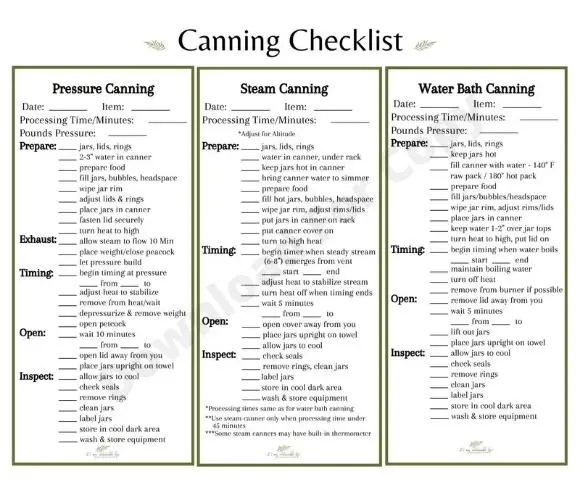
Be sure to grab your FREE copy by clicking the button below 😊
There you have it. A complete list of which foods that are safe to can and those that aren’t, the 3rd in my canning safety series. Hopefully this will arm you with the knowledge of safely canning {or not} your favorite foods.
What foods will you be canning this year?
Love, Light, & Laughter ~


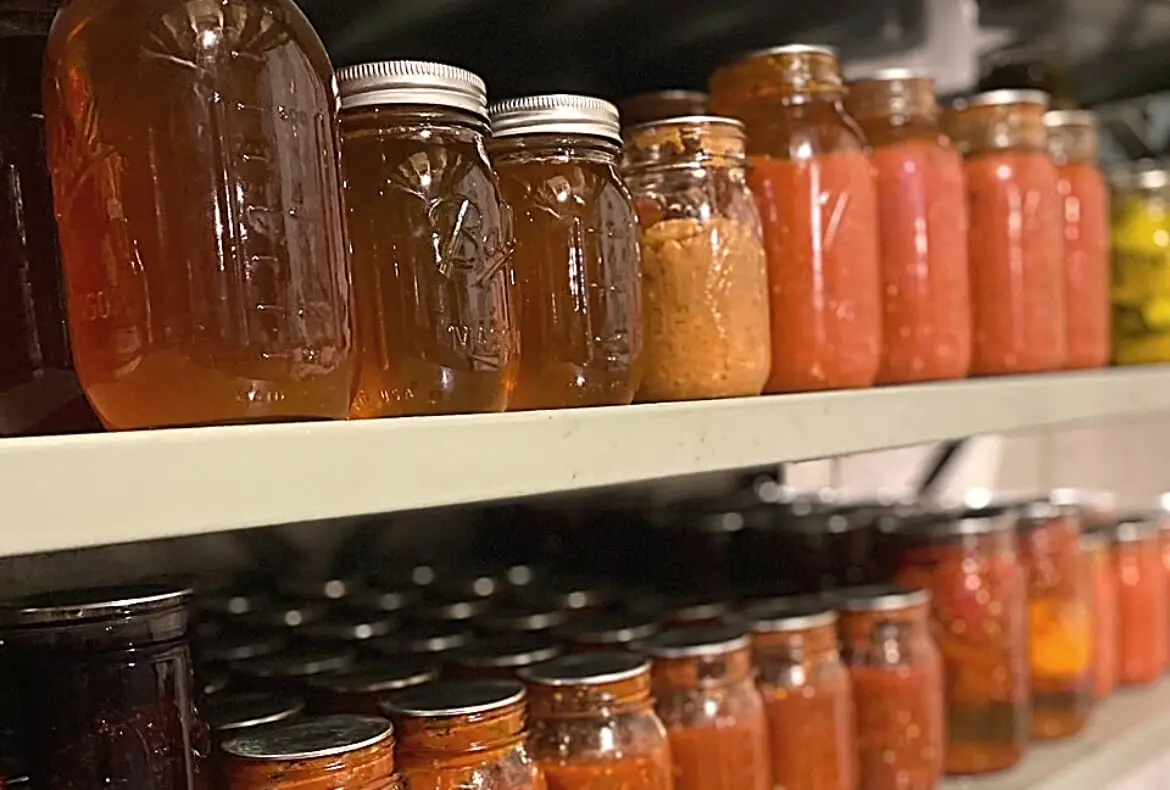

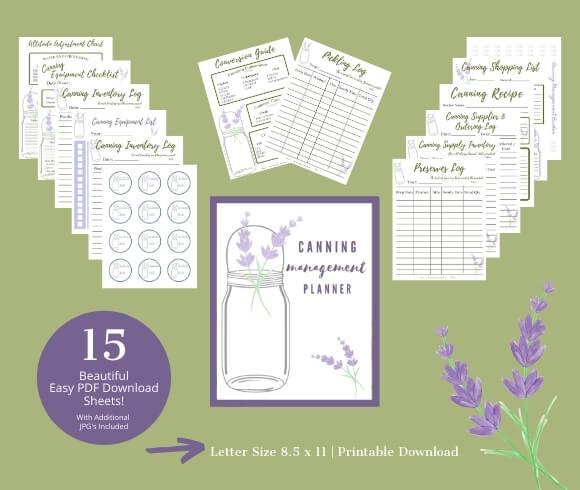
20 comments
Such a great resource for those learning to can!
I dont can but I appreciate reading through the list anyways. Thanks
What great info! Thanks for sharing!
You certainly have a wealth of knowledge when it comes to growing food and preserving it. I’m pretty good with my own garden, and purchasing form my local farm stand for the fruits and veggies that I don’t grow. However, I have a long way to go when it comes to preserving these garden goodies! You’ve inspired me to try t can a little salsa.
Yes! Take a look at my salsa recipe, it’s to die for and one that is requested at almost any gathering I attend. Happy salsa’ing!!
This is a great guide!! Thanks for sharing! I just purchased a pressure canner so I will give it a go!
An excellent, exhaustive treatise of canning. I’ve only ever canned tomatoes and jams – I’m chicken!
Thanks for the list of foods to not can. I’ve often found information on which foods require which canning method, but not really read anything about what not to.
Great post. I get asked so many of these questions in classes and on my site. It’s all really common sense/logic but not often exercised, lol. I can’t believe some of the things I see people canning in certain groups! Thanks for sharing this with us at the Homestead Blog Hop.
Such logical, great advice. We all need to be so careful when preserving food. It can go very wrong quickly if not extremely careful. Great guide!
Can you imagine canned Tofu – Yikes! I love the photo, is that your canning shelving? Gorgeous.
Hi Sandi ~
Yes, that’s my canning pantry. I’m with you, tofu canned? Not so appetizing! Thanks so much for reading!
This post is insanely helpful. I pinned it for later for when I finally start canning!
These are thorough do and don’t lists. Definitely want to avoid botulism!
This is so good to know! My grandmother used to can but it not with us anymore. I’ve considered canning before but not known where to start. This is a perfect “Do and Don’t Do” Guide for beginners.
Congratulations on the opening of your Etsy shop!
Thank you, Amy! Hope you find something you like there 😊
What great information! Safety is important when canning.
Good to know! I never really thought about what NOT to can
Love this! I have a bunch of mason jars, so I have been thinking about trying my hand in canning… Such an informational post!
Jenna ♥